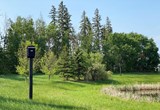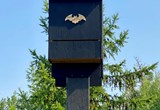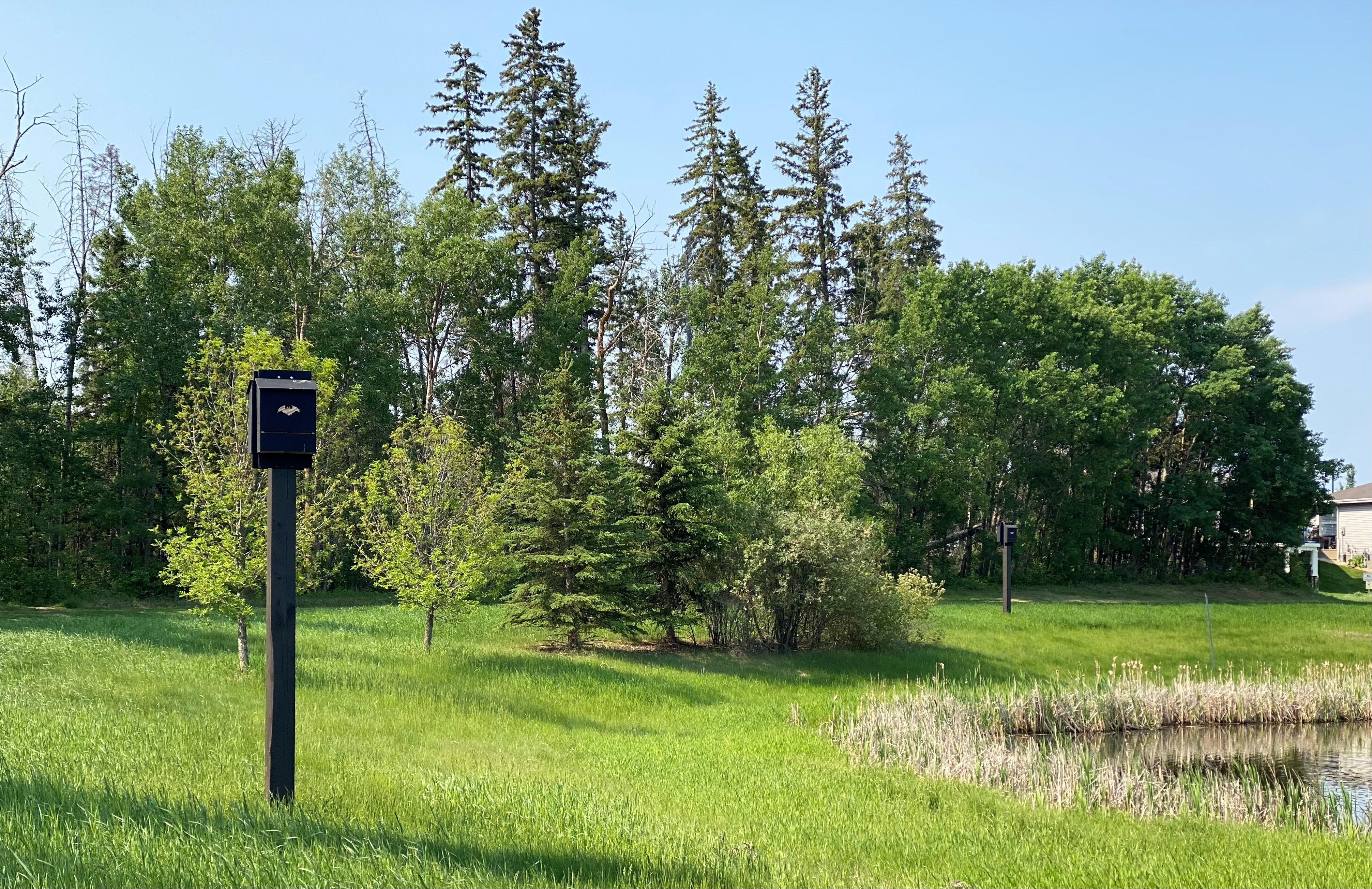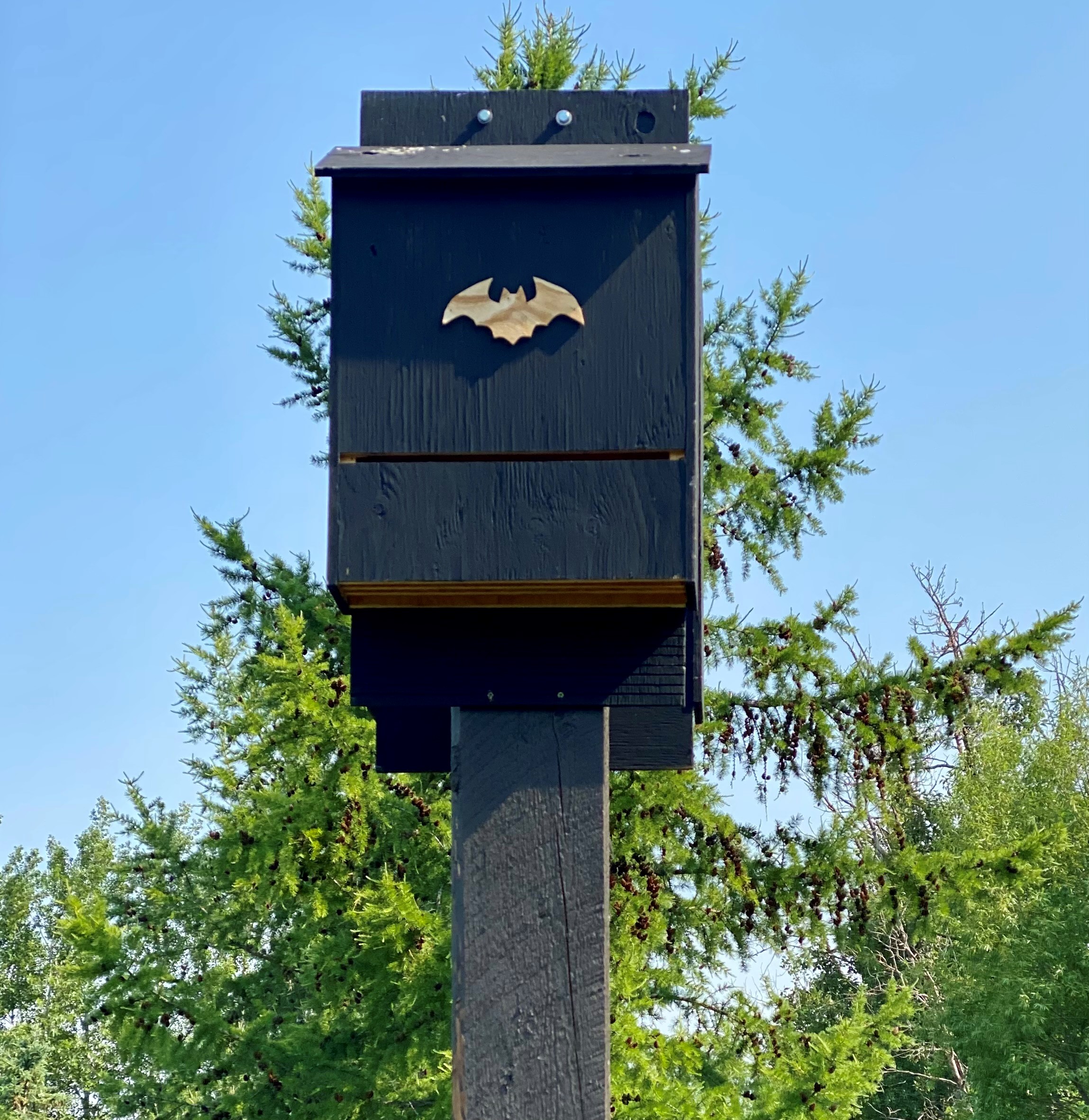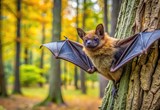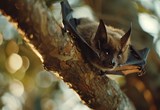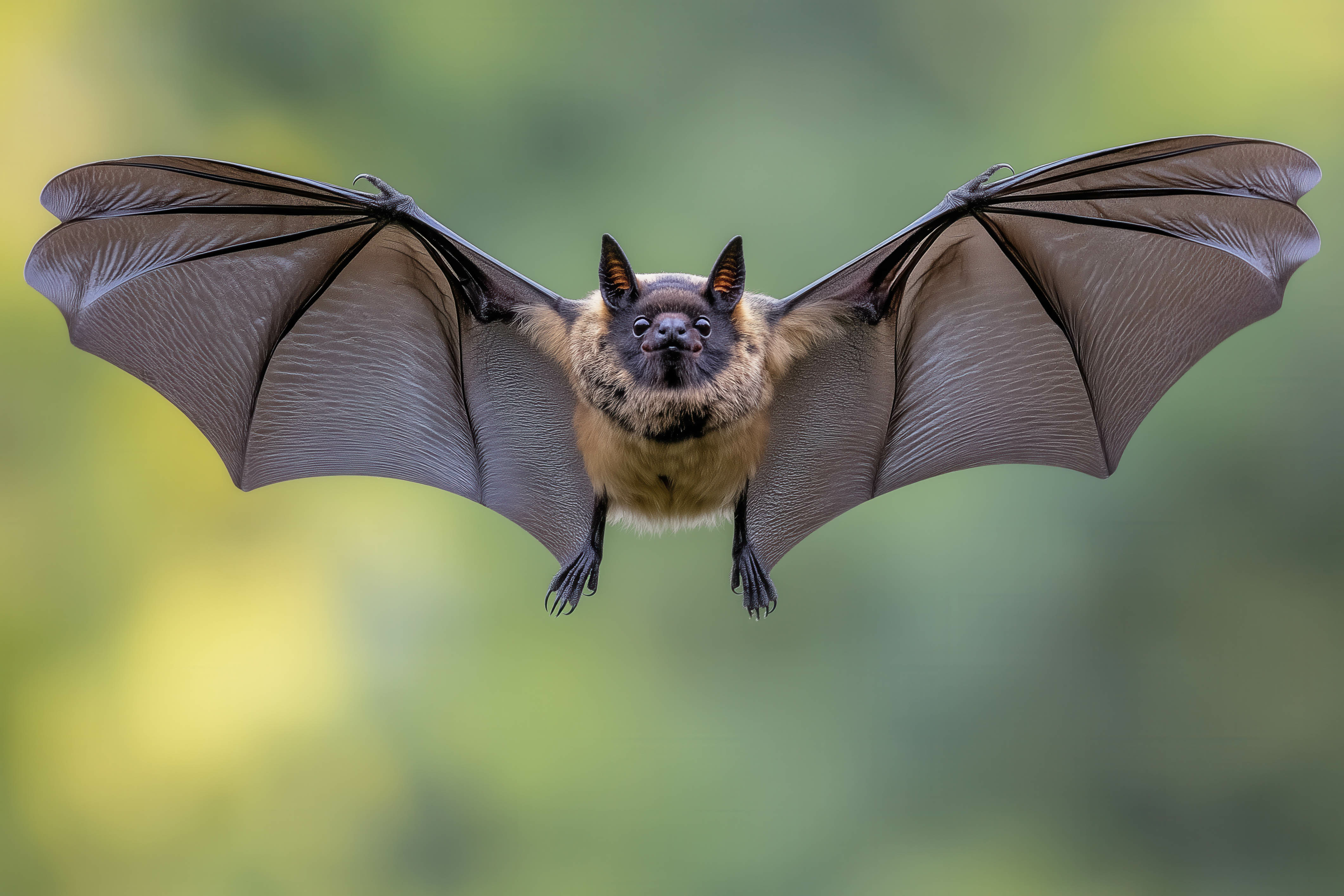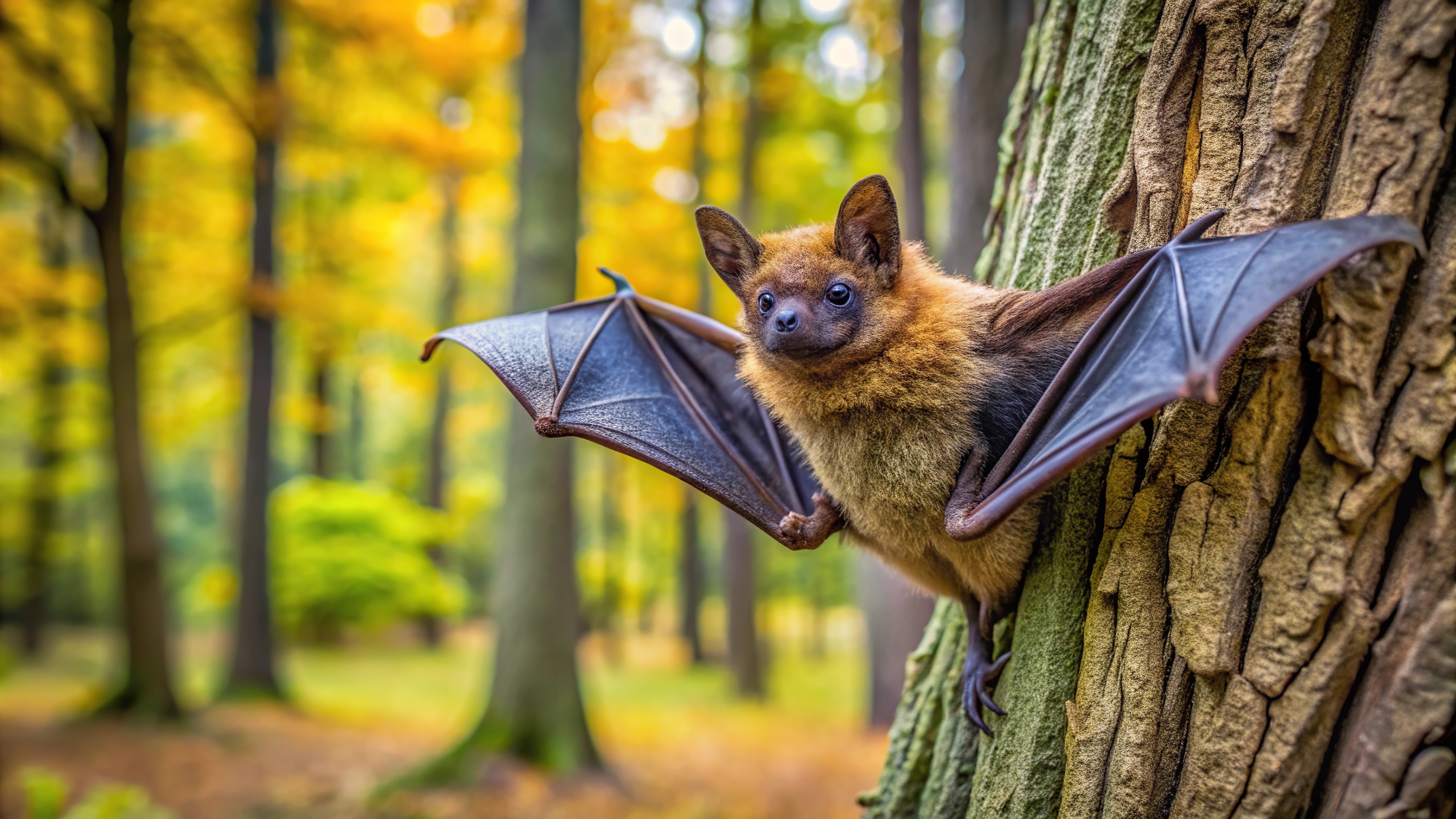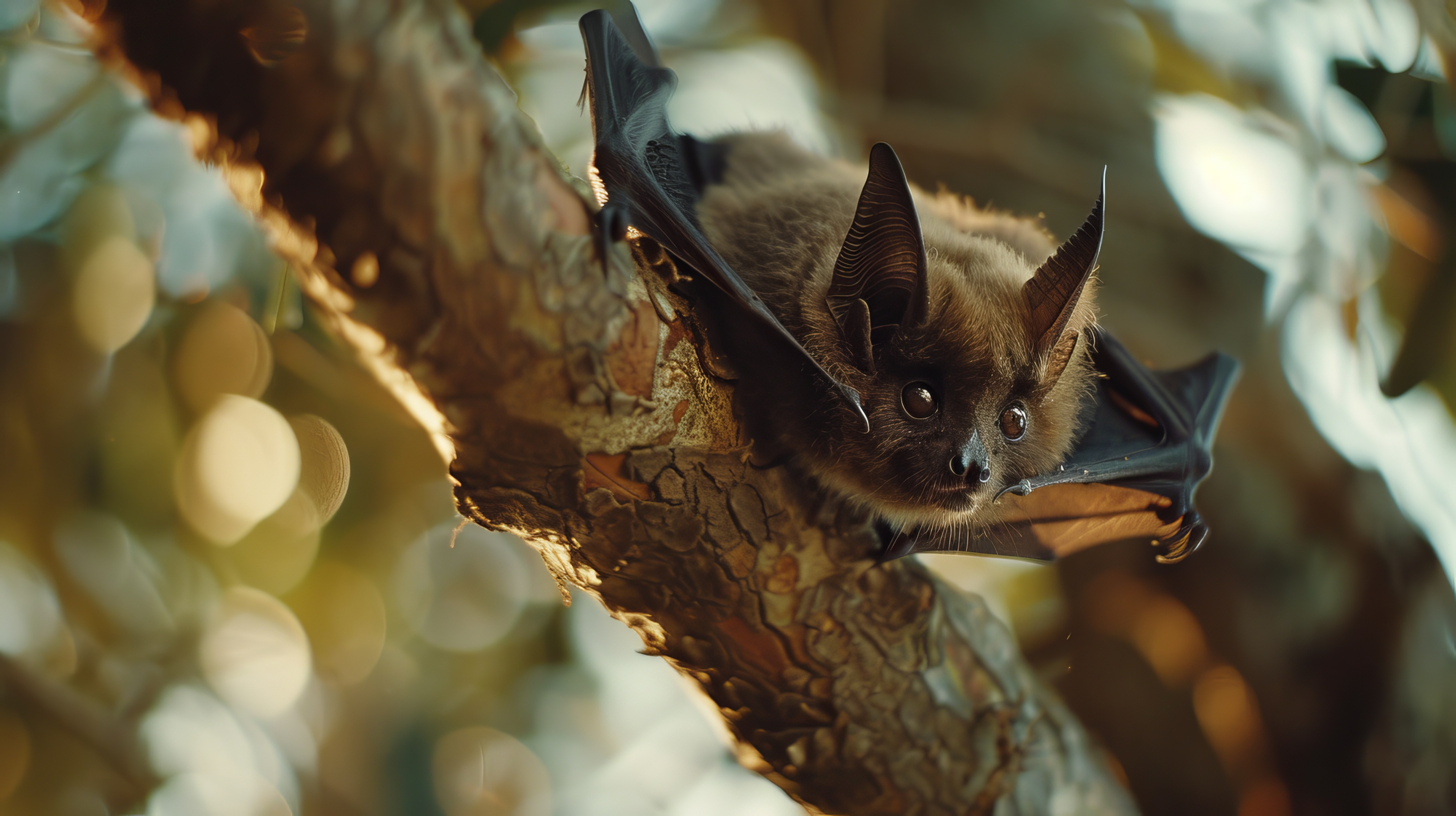Urban bats
Spruce Grove has plenty of natural spaces that attract a wide variety of wildlife, including bats.
Bats play a vital role in our ecosystem by helping to control pest insect populations and support the pollination and seed dispersal of many plants. Supporting the local bat population helps contribute to local biodiversity and promotes a healthy, balanced environment in the city.
To support bat populations, the City is installing bat houses in low-traffic areas—away from parks, playgrounds and streets. These bat houses were provided to the City by Men’s Shed. This gives bats a safe, undisturbed place to roost.
Why bat houses matter
Alberta bats have experienced significant setbacks from fungal diseases like white-nose syndrome and natural habit loss from tree removal. Installing bat houses is one way we can support their recovery and help rebuild bat populations in Alberta and the Spruce Grove area.
Bat houses, or bat boxes, are artificial structures that provide bats with a safe place to roost during the day and are increasingly important for supporting local bat populations. While similar to birdhouses, bat houses have some unique features:
- Bat houses are designed to accommodate hundreds of bats in a single structure.
- Female bats often roost together in large groups, raising their bat pups in shared spaces.
- Male bats may also use bat houses but tend to roost alone or in smaller numbers.
Did you know?
- Bats are the only mammals that can truly fly.
- They are nocturnal, meaning they hunt and forage at night and roost during the day.
- Bats have limited vision and rely on echolocation to navigate their environment.
- At least nine different bat species can be found in Alberta.
Frequently asked questions
Bat houses are currently installed around the Heritage Creek stormwater management facility west of Marlboro Park.
Bat roosting refers to when bats rest or sleep in a safe, sheltered place. Roosting takes place during the day as bats are nocturnal.
Bats are not dangerous; they tend to avoid people and will only bite in self defense.
Bats are not common carriers of rabies. The prevalence of rabies in Alberta bat populations is extremely low and human infection is not common. To learn more about rabies testing and controls in Alberta, visit the AB Government website.
A variety of bats species are endangered in Alberta, primarily due to the threat of white-nose syndrome, a fungal disease that leads to bats waking up from hibernation early. The disease has a slow recovery rate and effects reproductive speeds.
No bats cause little to no damage.
